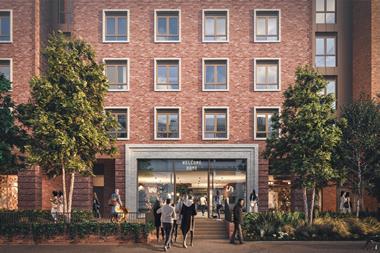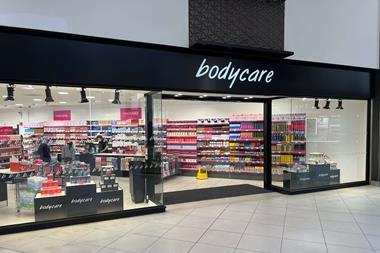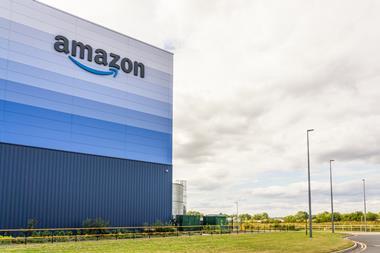Aberdeen is a bubble in Scottish retail. Rich on North Sea oil, with the lowest unemployment rates in the country, it has a different rhythm to the retail scenes of Glasgow and Edinburgh. But the arrival of another large shopping centre in Aberdeen within the next two years will challenge the dynamics of the city and, despite the strength of the catchment, some fear that it could burst the bubble.
The retail scene in Aberdeen is vibrant. Three large centres – The Mall Aberdeen, Bon Accord and St Nicholas – sit within 1,970 ft (600m) of each other, flanking the city centre’s main shopping area, known as the L. Between them, they boast a considerable shopping centre offering already, with about 90 stores in total, anchored by Debenhams, John Lewis and Marks & Spencer. And the traditional retail hub in Aberdeen, on Union Street, is still in good health.
If this wasn’t enough, Hammerson’s£245 million Union Square development – due for completion next year – will sit downhill from The Mall, leading to the harbour. More mixed use than its Aberdeen neighbours, Union Square will include a multiplex cinema, 22 restaurants and cafés and a 203-bed hotel.
Its success will depend on whether it can meet three requirements: it must find a way to fit in with the already crowded shopping centre landscape; access needs to be improved; and, crucially, evidence must be produced that Aberdeen needs or can even support another centre.
Aberdeen – the most northerly major city in Great Britain – is 55 miles from Dundee and 90 miles from Edinburgh. As a result, its catchment area is large – considerably more than the population of 400,000 directly surrounding the city itself. It is also a wealthy catchment. Benefiting greatly from the thriving local oil industry, the 52 per cent ABC1 population not only boasts the lowest unemployment rate in Scotland, but one of the lowest in the UK, at 1.9 per cent.
“All of the stats seem to indicate that there’s a lot of pent-up demand for floor space in Aberdeen,” says The Mall retail development manager Andrew Haughey. “We’re fully let and we just don’t have the capacity to bring anyone else in. Any big space that comes available seems to get snapped up pretty quickly.”
The existing retail offer is far from lacking. The Bon Accord and St Nicholas centres, which are owned by Scottish Retail Property Limited Partnership (SRPLP) – a joint venture between Land Securities and British Land – have become one scheme and could eventually be physically connected. The enlarged scheme covers 630,000 sq ft (65,030 sq m) and houses about 70 stores. A£2 million refurbishment of the St Nicholas centre is planned and an extension of the Bon Accord area, incorporating a new 54,000 sq ft (5,015 sq m) Next, is set to be completed by mid-2009.
The Mall Aberdeen also brings a solid retail presence to the mix, including anchor stores Debenhams and Primark, as well as HMV, Waterstone’s and JD Sports.
On top of these well-established shopping centres, Aberdeen is home to the prosperous Union Street, which The Mall is just off and which Union Square will back on to. Traditionally, Union Street was a key retail destination and, although the building of St Nicholas in 1985 and Bon Accord in 1990 changed the landscape for good, it has kept its place among the retail hotspots. The mile-long stretch includes H&M, Topshop, Bhs, Lush, USC and Office among its line-up, as well as a thriving nightlife.
Carving out a place
Whether or not Union Square is needed in Aberdeen is a contentious question that will linger until its completion and beyond. The key for Hammerson will be to ensure that Union Square can find its place in Aberdeen without taking too big a share of a catchment that, although large and affluent, is still finite.
According to some, Aberdeen is crying out for more retail space. The wealth of shopper potential and the healthy lettings picture in the city seem to suggest that it could support a new centre. Space does not remain unclaimed for long in Aberdeen, as was demonstrated by the ease with which SRPLP managed to let the 55,000 sq ft (5,110 sq m) unit previously occupied by Primark to New Look.
With 650,000 people living within 1.5 hours’ drive of Aberdeen – for whom the wealth of retail in Glasgow and Edinburgh is a long trip – there are plenty of shoppers to go around. And, while the offer in Aberdeen is strong, the existing centres are relatively small and of a single-use nature. Union Square will be part of a new generation of mixed-use centres, in which leisure and catering are also on offer.
CBRE Scotland chairman Doug Smith, who is advising Hammerson, says: “Aberdeen doesn’t have the out-of-town offerings of Edinburgh and Glasgow, so there are a lot of shoppers drawn to the centre. Union Square provides the kind of space that you just couldn’t get on Union Street, Bon Accord or St Nicholas. “There’s enough tenant demand in Aberdeen for all the schemes – including Union Square.”
SRPLP and The Mall are tentatively welcoming Hammerson’s development, but are keen to ensure that its presence will be good for the city and their centres. The Mall retail development director John Wood says: “Union Square will be directly behind our scheme and we’ve been talking with Hammerson about how it will link with ours. Hopefully, we’ll all benefit and it will benefit the town as a whole.”
But there are more challenges facing Hammerson besides fitting in with the catchment and retail landscape. Transport is a major issue in Aberdeen that has been a sticking point for other retail schemes. The Union Square site is in the middle of a complex and congested road system, which is likely to be compounded by the opening of the centre. Union Square will be accessed by a one-way-system that already serves as one of the main arterial routes out of Aberdeen and is extremely busy at rush hour.
Hammerson says that this will not be as big a problem as many envisage, because almost 50 per cent of the centre’s shoppers will be travelling there by public transport, according to Union Square development manager Guy Wells. The scheme will be served by an integrated bus and railway station.
Nevertheless, Hammerson is still likely to face difficulties with the road system. Ross Allardice, director of in-town retail at Savills’ Glasgow office, explains: “There could be some difficulties with congestion around Union Square. It’s going to be quite hard because of the existing network and how it’s going to developed. I can’t see how they’re going to rectify it.”
Despite Aberdeen’s considerable catchment and well-established retail offering, the arrival of a new player on the scene will inevitably be a shock to the system. However, as Wells points out, there has been no new major retail space in the city for nearly 18 years. And the fact that space is so hard to come by and so fought over when it does would suggest that there is scope for the retail offer to grow.
Hammerson must tread carefully if Union Square is going to fit in with its neighbours. It must ensure that what is good for Union Square is also good for Aberdeen if the city is to continue to be the affluent bubble that bred the need for another central shopping centre.


























No comments yet